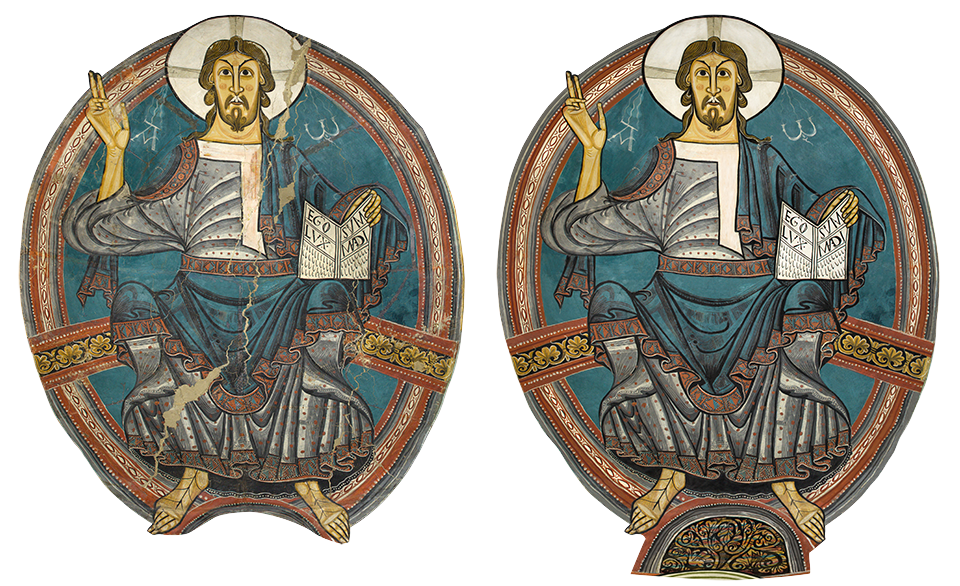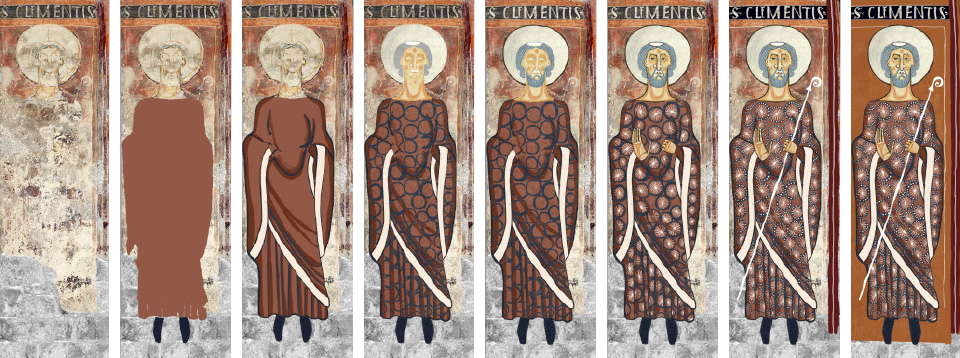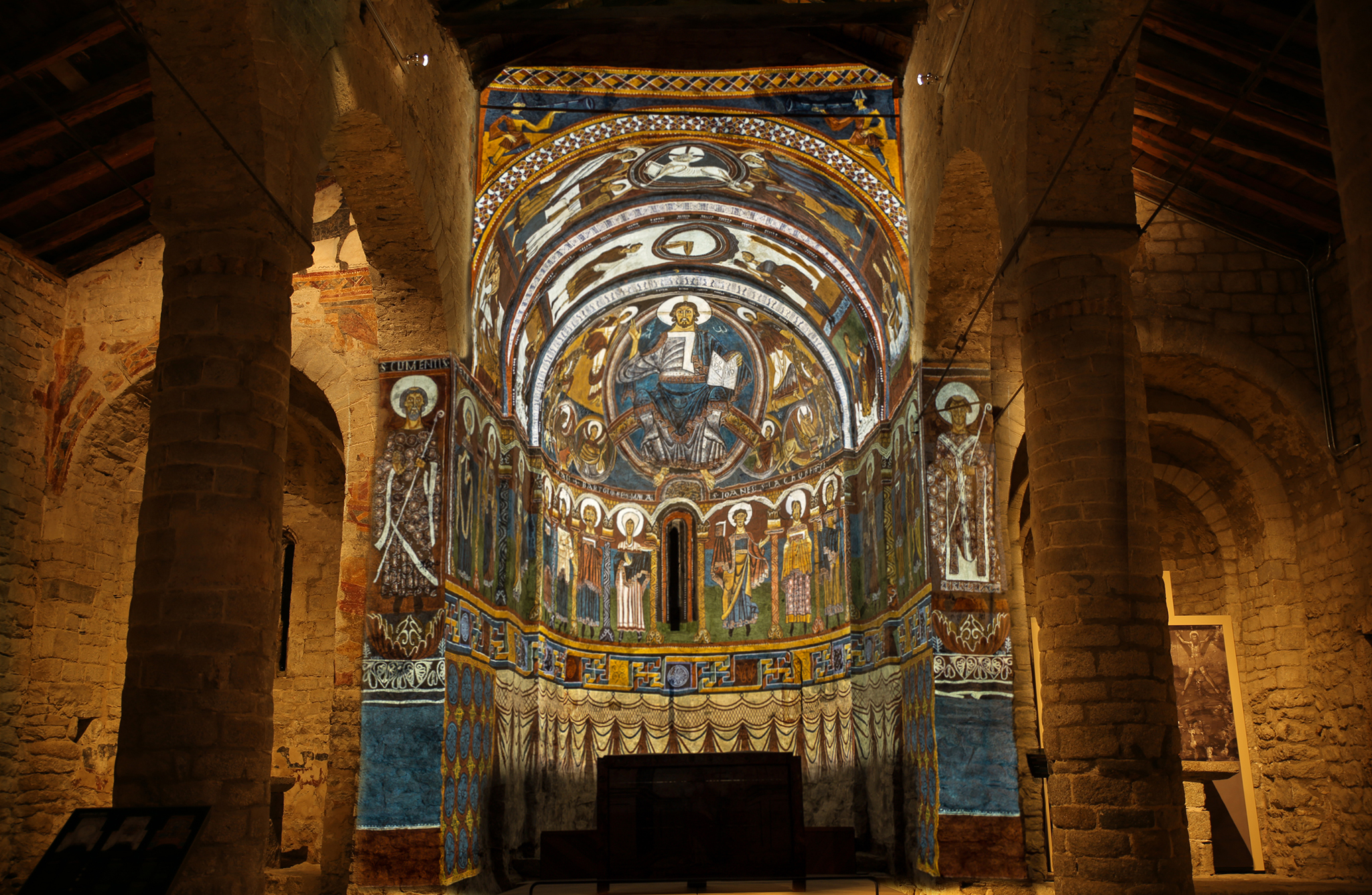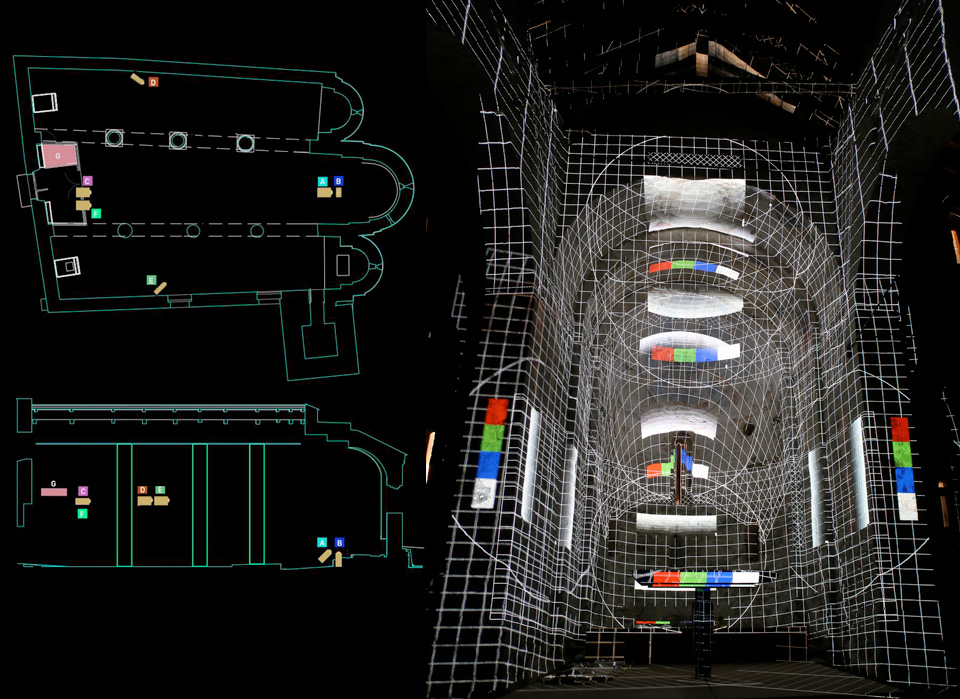We return the paintings of the church of Sant Climent de Taüll to their place of origin. We have restored and restituted the paintings of the apse and the presbytery, one of the most important jewels of the Catalan Romanesque and that are currently preserved in the National Art Museum of Catalonia (MNAC).
We have designed an installation adapted to the Taüll church structure that recreates the frescoes and explains the painting technique through a permanent mapping projection.





